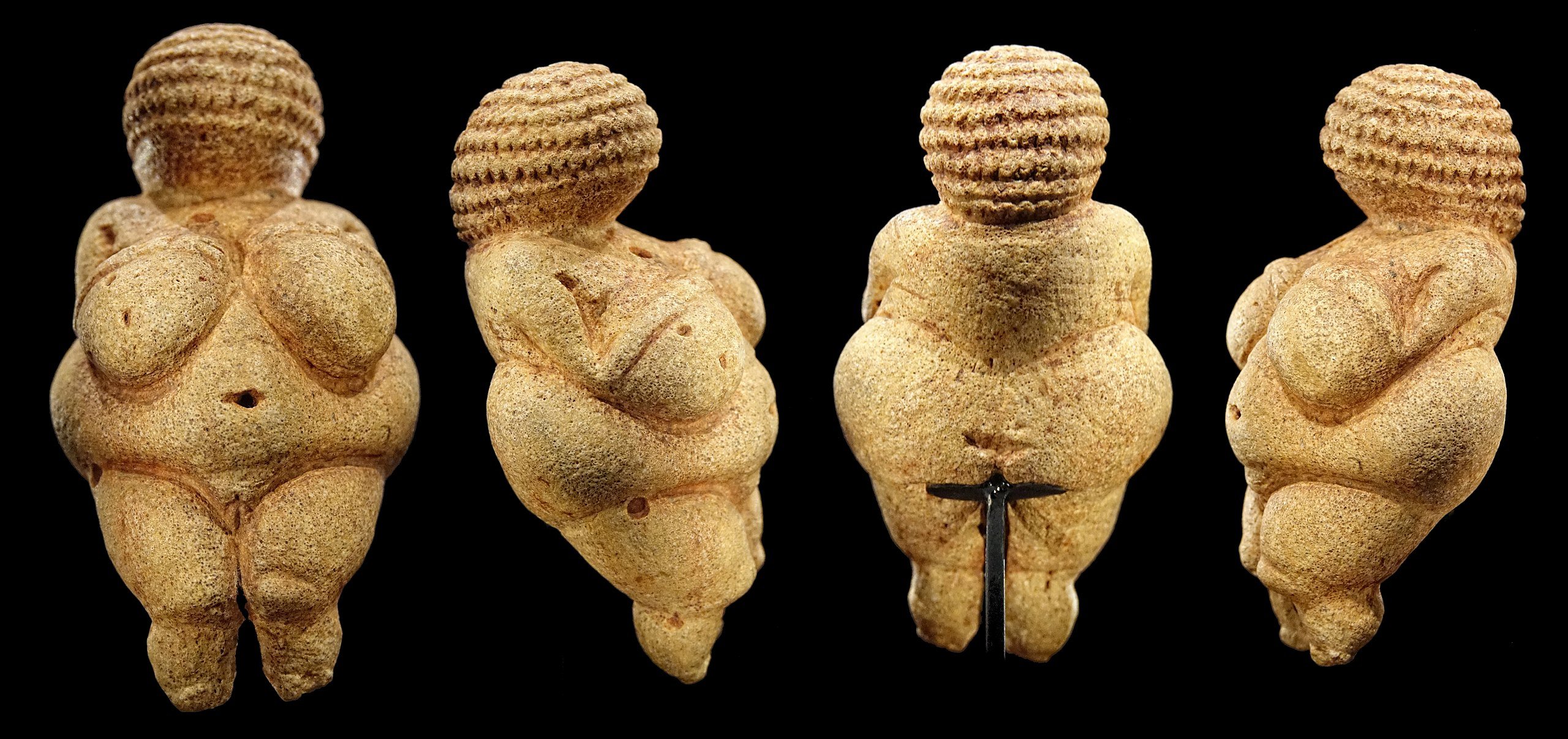
Europe’s prehistoric Venus figurines, dating from the Upper Paleolithic, are one of the world’s oldest art forms. With their voluptuous female figures carved from stone, ivory, horn, or clay, the sculptures have long been thought to have served as fertility totems. New research argues that they played another role: promoting a positive body type that would keep women warmer in order to live through the Ice Age.
“From 38,000 to 14,000 BP (before present), one of the most arduous climatic periods in human history… humans faced advancing glaciers and falling temperatures that led to nutritional stress, regional extinctions, and a reduction in the population,” wrote Richard J. Johnson, Miguel A. Lanaspa, and John W. Fox in the journal Obesity.
Their theory, reports the Art Newspaper, was that the physique of these Venus figures, which include the famed Venus of Willendorf, would correlate to the proximity of glacial fronts. They hypothesized that figures created in regions closer to Europe’s advancing glaciers would be more robust.
Analysis of the figurines’ waist-hip and waist-shoulder ratios bore out this theory. “Figurines are less obese as distance from the glaciers increases,” the paper found. “Especially during pregnancy, obesity helped assure survival during episodes of severe food shortage.”
Venus figurines from Europe and the steppes of Russia (38,000 to 14,000 BP). (A) Venus of Dolni Vestonice, Czech, 26,000 BP. (B) Venus of Savignano, Italy, 24,000‐23,000 BP. (C) Venus of Zaraysk, Russia, 19,000 BP. (D) Venus of Abri Pataud, France, 21,000 BP. Photos collected for the study by Richard J. Johnson, Miguel A. Lanaspa, and John W. Fox.
Basically, the colder the climate, the curvier the figurine.
These ancient sculptures, with their large breasts, stomaches, thighs, and backsides, reflected the desirability of body fat for women during the late Stone Age. The worn surfaces of many Venuses suggest they might have been passed down as “ideological tools” that “conveyed ideals in body size for young women,” the researchers wrote.
Ice Age women likely passed the statues down from generation to generation, with some wearing them as amulets to help achieve weight gain—which would make them more likely to successfully conceive a child, carry it to term, survive delivery, and nurse a healthy baby.
“Increased fat would provide a source of energy during gestation through the weaning of the baby and as well as much needed insulation,” said Johnson in a statement. “The aesthetics of art thus had a significant function in emphasizing health and survival to accommodate increasingly austere climatic conditions.”